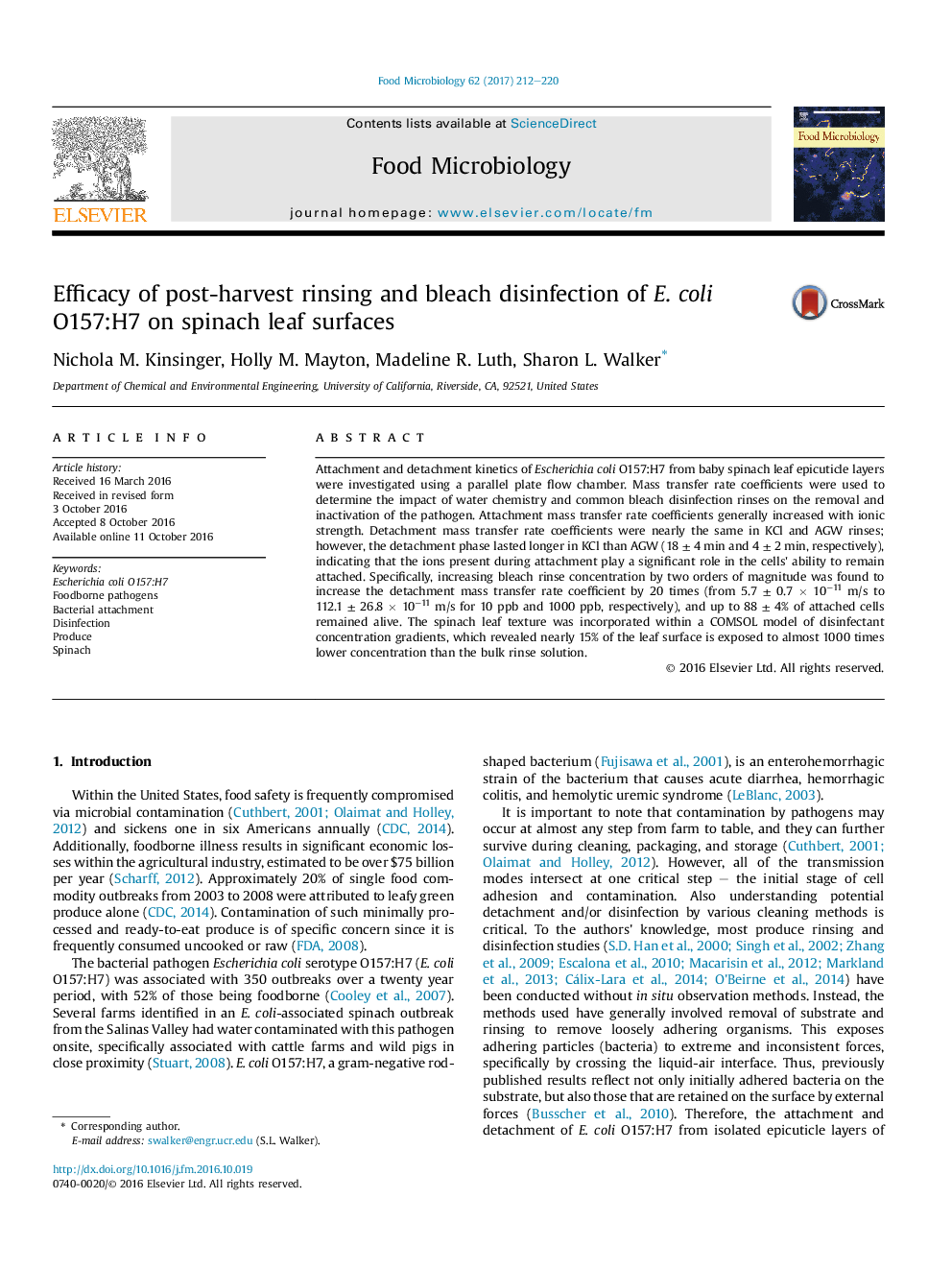| Article ID | Journal | Published Year | Pages | File Type |
|---|---|---|---|---|
| 8843647 | Food Microbiology | 2017 | 9 Pages |
Abstract
Attachment and detachment kinetics of Escherichia coli O157:H7 from baby spinach leaf epicuticle layers were investigated using a parallel plate flow chamber. Mass transfer rate coefficients were used to determine the impact of water chemistry and common bleach disinfection rinses on the removal and inactivation of the pathogen. Attachment mass transfer rate coefficients generally increased with ionic strength. Detachment mass transfer rate coefficients were nearly the same in KCl and AGW rinses; however, the detachment phase lasted longer in KCl than AGW (18 ± 4 min and 4 ± 2 min, respectively), indicating that the ions present during attachment play a significant role in the cells' ability to remain attached. Specifically, increasing bleach rinse concentration by two orders of magnitude was found to increase the detachment mass transfer rate coefficient by 20 times (from 5.7 ± 0.7 Ã 10â11 m/s to 112.1 ± 26.8 Ã 10â11 m/s for 10 ppb and 1000 ppb, respectively), and up to 88 ± 4% of attached cells remained alive. The spinach leaf texture was incorporated within a COMSOL model of disinfectant concentration gradients, which revealed nearly 15% of the leaf surface is exposed to almost 1000 times lower concentration than the bulk rinse solution.
Related Topics
Life Sciences
Agricultural and Biological Sciences
Food Science
Authors
Nichola M. Kinsinger, Holly M. Mayton, Madeline R. Luth, Sharon L. Walker,
